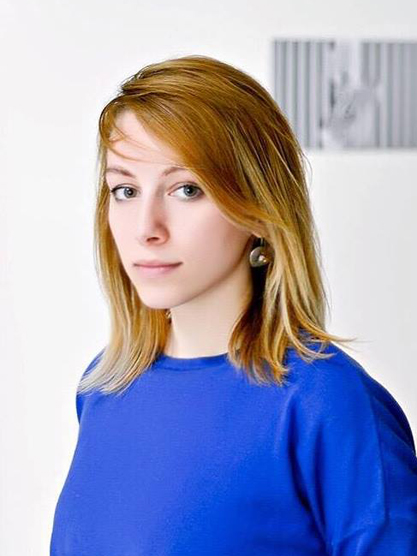Johanna Dhiamandi

XXIX Cycle - (A.A. 2013-2014)
IDAUP
Home Institution: Polis University Tirana
Scholarship
Curriculum: Architecture (ICAR15)
Research Topic: Sacred Architecture
Tutor DA-UNIFE: Pietromaria Davoli
Tutor Polis University: Antonino Di Raimo
Nationality: Albanian
Email: joana_dhiamandi@universitetipolis.edu.al
Profile
Biography
Joana Dhiamandi is an PhD. Architect and Designer. Since 2011 she works and teaches at POLIS University and actually she is the Vice-Dean in the Faculty of Research and Development and lecturer of architecture at POLIS University.She is active in engaging communities and developing a common platform for discussion in the end of design, architecture and urban planning. She earned her Master of Science Degree in “Applied Design” obtained at POLIS University Tirana and PhD degree obtained from University of Ferrara, Italy, focusing in “Sacred Architecture_Analysis of the Bektashi Tekke in Albania. Evaluation on Time and Place”. Dhiamandi, has been Co-curator of the conference “Tirana DESIGN Week, 2015” and Tirana DESIGN Week, 2017, also PR Manager at “Future Architecture Platform” in Albania. Dhiamandi expertise has been applied in several international events and workshops such as: “Albanian Riviera” 2014; “Revitalization of St. Anna Complex Ferrara” 2014; “Sicily Lab” 2011; “Participation by Architecture” 2012; “Bed & Bunker” 2012; “Sicily Lab” 2015. Currently, she is continuing to pursue her profession as a part time freelancer architect and glass artist while she is full time lecturer at POLIS University. She is also engaged in publishing in design and architectural journals.
Research skills
Analytical | Comparative | Historical | Theory | Design
Scientific activities
ORCID ID:
0000-0003-4501-2999
IRIS UNIFE ID:
rp00000
Doctoral research
Sacred Architecture_
Analysis of the Bektashi Tekke in Albania. Evaluation on Time and Place
The Sufi ideology had a significant role in the occurring development on the usage of the traditional Islamic architecture using some of the elements of the mosque in the Bektashi shrine that according to this observation are transformed following the specificities of the particular social-economic and cultural context that each Bektashi community was allocated to. However, no research has directly addressed these changes. Thus the aim of this research is to examine and prove the existence of a clear pattern in the Albanian context whether or not the local context and social-economic factors have been the main reason that led to the introduction of these elements of the Bektashi shrine. Exploring their physical, emotional, mental, spiritual and spatial interpretations; whether they have created an ambiance for the act of worship; understanding and evaluating the evolution of this sacred-typology on space, place and time in the Albanian Territory. Bektashi shrines have always been identified from an adaptive pattern that is articulated by the dome, the arch, the courtyard, the portal and the tomb, shaping the architectural language of the Islamic place of worship worldwide. However, this pattern is not credited as essential for the creation of the first tekkes, and is not documented to be a consistent part of the sacred ensemble. It has emerged and gradually developed as the major feature of the Bektashi formation and has facilitated several functions in the congregational Sufi-Muslim rituals. At the time of these constructive changes in the body of the tekke, an ideological shift has occurred from the traditional Islam, moving towards a more esoteric experience known as Sufism. This ideological shift was influenced and enhanced by the local context, which is characterized from an harmonious coexistence and balance between religious communities in Albania that for many centuries have created a unique cultural landscape. The research deploys the analyses from a typological way of research of sixteen (16) Bektashi case studies in Albania. Specifically, it will look at the form and spatial variety, which leads to the functionality of the space. Apart from that, this typological research will also show clearly the evolution of the Bektashi tekke from the beginning of the Islamic embracement in Albania. From there, the classification of types of Tekke design will be defined by analysing the inner spatial composition and not just by looking at the external built forms. As a result, it is expected that this research will provide innovative design solutions to the tekke design guidelines and to the users of the Bektashi community. The typological index produced by this research will aim to assist present and future generations into learning history through the trend of the Bektashi tekke design evaluation that is presented in this research.
Keywords
Sacred Architecture| Heritage | Landscape | Bektashi | Tekke

